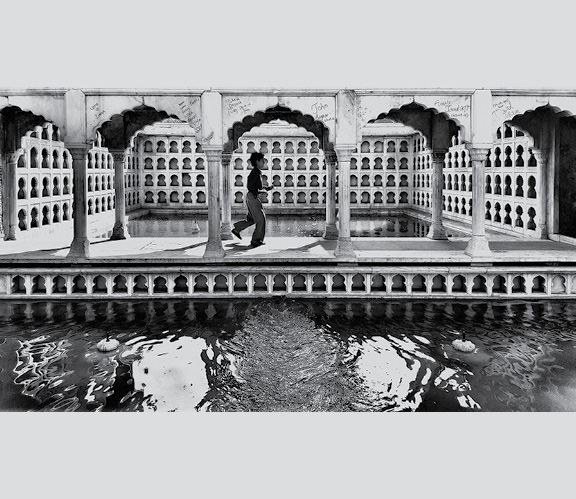Historian William Dalrymple is as comfortable and skilful with the photographic form as he is with words. Some of his recent photos, taken with a phone camera on his travels across South Asia, are part of an ongoing show in Mumbai, writes Bhumika Popli.
Scottish historian and writer William Dalrymple’s life revolves around the history of the Mughals. After having written many books on this subject—The Last Mughal, White Mughals—he has now cast his photographer’s eye on it. While researching his upcoming book, Anarchy, Dalrymple photographed many of the relevant locations. These photos are now part of an ongoing show, William Dalrymple: The Historian’s Eye, which opened at Mumbai’s Akara Art gallery earlier this week.
Anarchy, according to the author, “tells the story of how a militarised multinational destroyed and replaced the mighty and supremely elegant empire of the Great Mughals”. In the introduction of Anarchy, Dalrymple writes: “I have followed the footsteps of Shah Alam—the central character of Anarchy. These photographs shadow the footsteps of this Mughal King Lear, and follow his fortunes, and those of his allies and adversaries, between Delhi, Lucknow, Hyderabad, Mysore and Calcutta. They depict what is left of the world Shah Alam knew, the places he grew up in, the buildings where he formed his ambitions, and the places where his hopes came crashing to the ground.”
Though Dalrymple is known for his writings across the globe, his first love happens to be photography. The high contrast black-and-white image has become his signature style. They also make for excellent companion pieces to his writings on history.
Talking to Guardian 20 on his preference for black-and-white photography, he says, “I think architecture and landscape looks quite worthy if shot in this way. I have always preferred black-and-white over colour.”
The other interesting thing is that Dalyrmple has shot these images using a mobile phone. It came in handy for the photographer. He writes, “I now have an excellent little camera tucked away permanently in my back pocket. Discovering the Snapseed cellphone app has allowed me to produce the sort of grainy black-and-white images I love best, for the first time in 25 years. And these days, advances in technology mean that I can produce this work without covering myself with chemicals.”
He adds, “When you’re holding up your phone, even
The show several portraits the author-photographer has made on his travels. He says, “In Abbottabad, where Bin Laden took shelter near the Pakistan Military Academy, I ran into a family of truck painters. Truck painting is an incredibly elaborate art form in Pakistan. Pakistani truckers always say that Pakistani men will spend more on their trucks than they do on their wives. When I turned up, these men were painting the truck that you see in the background, and consented to pose for a picture.”
Henri Cartier-Bresson’s photos have always been important to Dalrymple . He says, “I grew up loving the architectural work of Bresson. I think I emulate much of his work.”
Talking about his photography show, Dalrymple says, “The portfolio of pictures that Nathaniel Gaskell and I have put together here is more focused than my last exhibition, The Writer’s Eye. It doesn’t range across continents; nor is it a portrait of India as a whole. India is, after all, far too vast and extraordinary to capture in any one show. Instead it is very specifically a set of images of the places where history and art were being made in the 18th and early 19th centuries, including a small selection of photographs from modern-day Pakistan and one from what is now Bangladesh. It is South Asia, if you like, seen through the historian’s eye.”

